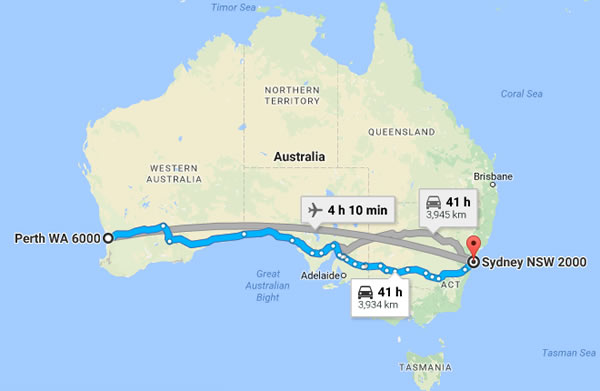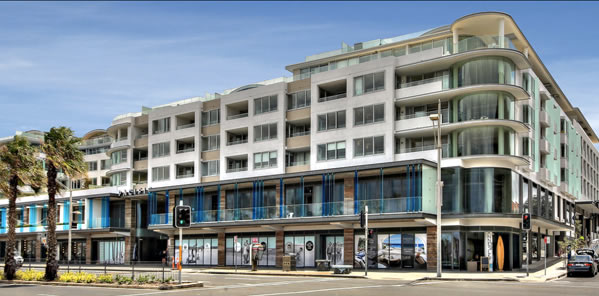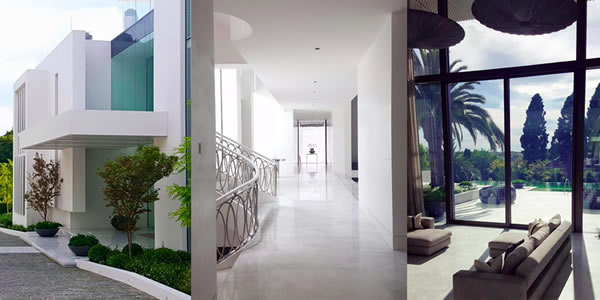 By Clayton Brown, Ivory Egg.
By Clayton Brown, Ivory Egg.
Australia is a vast continent with great distances between each of the major cities. This means that each region has to rely heavily on its own economy. As the crow flies, the distance between Sydney and Perth is around 3300km, more than 800km further than that between London and Moscow.

Currently, the Sydney and Melbourne construction market is booming across all areas. Brisbane is coming off a residential growth period and Perth is slowing down due to the changing fortunes of the mining sector.
Commercially, Sydney is going through a renaissance. The CBD (Central Business District) is sprinkled with cranes undertaking major developments. Projects underway or in final planning stages include one-billion-dollar revamps of Circular Quay and Wynyard Station; a luxury hotel and casino complex at Barangaroo; plus urban residential projects of 1250 new homes with a promise to house 6000 new residents in Sydney’s inner city, staged over the next ten years.

Major infrastructure projects, including the AUS$16.8 billion WestConnex Toll road and a new Western Sydney International Airport at Badgerys Creek, will only add to the residential and commercial growth that New South Wales is experiencing.
The trend of the Australian construction industry’s growth being redirected from engineering projects to more commercial and residential projects is ideal for KNX. Like the rest of the world, there is also a continuing focus on building automation and energy management.
Why KNX is Suited to the Australian Market
KNX in Australia is making deep inroads into the commercial and domestic markets. The growing awareness of global warming and the Australian Government’s push to achieve its greenhouse gas emission targets has refocused the building control industry onto the more economically-pressing integration issues of heating and cooling. Our widely-swinging climatic conditions mean shading and mechanical integration are becoming the cornerstones of many building automation systems. This focus away from purely lighting control to real building control, in my opinion, uniquely places KNX as the premier building control system in Australia.
The three new commercial towers at Barangaroo in Sydney are fantastic examples of how KNX has been used in Australia to integrate the control system into the fabric of the building. Reducing the heat/cold entering or leaving the buildings while interacting with the lighting, occupancy and mechanical system provides the opportunity to significantly reduce energy usage and boost employee comfort.

In the residential space, Australia has been dominated by two major players in the electrical accessories market. The introduction of KNX has opened the market to a far wider and more sophisticated range of consumer products than has previously been available here.
This expanded range of accessories alone has rocketed KNX forward in the Australian housing market. At the same time, we are seeing a shift away from simplistic lighting control with media distribution as the basis for home automation systems. KNX, with its designer switches and intelligent building control, is providing an appealing alternative to the traditional systems that have, until recently, dominated our local market.
Customer convenience and energy management are also major reasons why KNX is making inroads into the Australian market. Many residential projects are finding the ease of integrating remote touch points such as intercom/access control, air-conditioning, underfloor heating, curtains etc to a central control location is easily done with KNX. This central location and the flexibility it provides allows residents a simple way to monitor and control their daily energy use, saving people time and reducing their carbon footprint.
Challenges facing KNX in Australia
The main challenge Australia is facing is that we are coming from a long way behind the field. While KNX has proven itself for over 25 years throughout the rest of the world, it is a relative newcomer to the Australian market.
Companies here who have enjoyed very limited competition have embedded themselves with installers and consultants alike. We are finding that those who embrace KNX and take the first few hard steps of relearning, are smitten, becoming devotees of its power and flexibility. For Australia, awareness of and education in KNX is crucial for its success.
KNX in Action
In Sydney’s CBD, KNX has been installed in some of the largest and most prestigious projects of recent times. The three towers at Barangaroo set a new benchmark in commercial office space, with KNX integral in their achievement of a six-star Green Rating for all three buildings.
The highly-anticipated Entertainment Centre and Convention Centre at Darling Harbour will both be controlled by KNX.
In the multi-residential sphere, the ‘Pacific’ apartment development on Sydney’s iconic Bondi Beach won a prestigious NECA (National Electrical and Communications Association) NSW Award of Excellence in the Energy Efficiency and Environmental category. There are also fantastic domestic installations happening in all of the different states.

In fact earlier this year, a project based in Melbourne, Victoria won two prestigious KNX international awards. This 3000m2 home has been designed to provide near off-the-grid living throughout and uses KNX to manage DALI lighting control and shutter control with solar tracking for over eighty independently-motorised curtains. In addition, heating, ventilation, air-conditioning and household appliances are connected to KNX relay circuits for optional isolation, minimising energy consumption. Technical surveillance is also fed onto the KNX bus that features fault detection for the customer and remote maintenance. To maximise energy savings, each room of the home is monitored 24/7, switching between occupied and unoccupied modes.

Getting the Word Out
The Australian KNX national group has just finished another successful display at the Integrate Expo in Sydney. Integrate is Australia’s largest AV and systems integrator event. Once again KNX was well accepted with many enthusiastic integrators spending quality time with the manufacturer representatives.
In the background, the KNX national group has been working tirelessly in trying to get ISO/IEC 14543-3 adopted as an Australian standard. It is part-way through the process and at this time we are waiting for a decision from Standards Australia.
As a distributor, Ivory Egg Australia has been very active in promoting KNX. In addition to our training courses, we have recently teamed up with national training company MILCOM to help us organise a national program. The goal is to have the KNX basic certification included within MILCOM’s certificate IV in telecommunications course, in Victoria. Never has the convergence between building control and communications been more evident, and this collaborative venture gives us the opportunity to be turning out IT professionals who already have a deep understanding of building control, and in particular KNX.

For the last couple of years we have been providing product and technical information to our extensive installer base through regular mailouts. In addition to face-to-face meetings, we also use current case studies and new product news to keep a regular digital dialogue with architects and consultants.
We also have plans to expand our digital marketing programme through social media. The Australian market is crying out for the fantastic products and systems that KNX has to offer, and I for one will do my best to make sure the whole country is aware of what is available.
Conclusion
Australia offers huge opportunities for KNX, but we need more consistent exposure. This is still a new market, so the more installers we have using KNX and promoting the benefits to consultants, builders and owners, the faster KNX will be adopted. Any help in increasing industry awareness would be beneficial for all involved.
Australia is entering the IoT world like everywhere else. How KNX is seen in this new, consumer-driven market sector will determine the level of its success. With the right approach and support, we believe that KNX will allow us to be ‘the power behind thoughtful buildings’.
Clayton Brown is the Director of Ivory Egg Australia, and Owner of Synergy Integrated Systems. Ivory Egg Australia is a technical distributor of KNX and other building automation technology.











